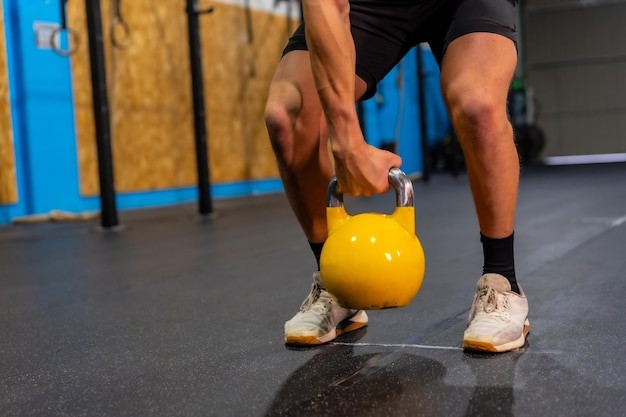The goblet squat is a powerful exercise that packs a punch for your whole body. It’s great for building muscle, especially in your legs, core, and glutes, while also boosting your heart health. Whether you’re new to working out or a seasoned pro, the goblet squat is a valuable addition to your fitness routine.
Getting started with goblet squats
You don’t need much to do a goblet squat – just a kettlebell or dumbbell and enough space to move comfortably. Here’s how to do it right:
• Stand with your feet a bit wider than your hips, toes pointing slightly outward.
• Hold a kettlebell at your chest, cupping it like a goblet.
• Keep your back straight and look ahead.
• Push your hips back and bend your knees to squat down.
• Keep the weight close to your body as you move.
• Try to get your hips below your knees.
• At the bottom, your elbows should touch the inside of your knees.
• Push through your heels to stand back up.
• Squeeze your glutes at the top.
Why goblet squats are great
Goblet squats work many muscles at once. They target your thighs, glutes, calves, and core. They even work your arms and shoulders a bit as you hold the weight.
One big plus of goblet squats is how they help improve your form. Holding the weight in front of you naturally keeps your chest up and your back straight. This can help prevent common mistakes like leaning too far forward or letting your knees cave in.
Goblet squats are also great for your knees. By aiming to touch your elbows to your knees at the bottom of the squat, you keep your knees in line with your toes. This can help reduce knee pain and injury risk.
Making goblet squats work for you
If you’re new to goblet squats, start without weights. Just hold your hands at your chest as if you were holding a kettlebell. As you get stronger, add light weights and gradually increase.
For a bigger challenge, use heavier weights or slow down the movement. You can also try holding a barbell at your shoulders instead of a kettlebell.
Watch out for common mistakes
Even though goblet squats are relatively simple, there are a few things to watch out for:
• Keep the weight close to your body.
• Don’t lean forward from the waist.
• Keep your weight on your heels, not your toes.
• Make sure your knees don’t cave inward.
• Squat as deep as you comfortably can.
Stay safe
Goblet squats are generally safe, but if you have knee or back pain, start with a smaller range of motion. Gradually go deeper as you get stronger. If you feel sharp pain, stop the exercise.
Remember, good form is key. It’s better to do fewer reps with perfect form than many reps with poor form. With practice, you’ll master the goblet squat and enjoy its many benefits for your overall fitness.


